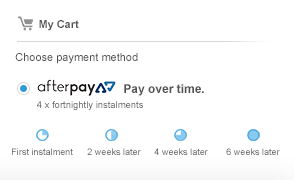How do you fish a CRANKA Crab?
The CRANKA Crab is a very versatile lure that can be used in a variety of fishing scenarios, including sand flats, rocky shorelines, weed edges, mudflats, pontoons, bridges and docks to name but a few. The key is to fish it in areas where crabs are present and fish are known to feed upon them. To maximize your success, it is important to select the right crab based on size, colour, and weight. Matching the colour of the crab to the local waterway and selecting the appropriate weight based on water depth and current are critical factors for success.
For example, if fishing a 50mm Treble Hook Model CRANKA Crab - the 3.9-gram Light model is ideal for water depths of 3 meters or less with little to no current, the lighter weight also allows the lure to descend through the water column slower and more naturally. This provides more time in the strike zone on any suspended fish while the lure is sinking to the bottom. On the other hand, the 5.9-gram Heavy model is recommended for deeper water or when there is a lot of current. The heavier weight enables the lure to get down to the bottom faster and is easier to keep in contact with while dragging it along the bottom. The Heavy model is also useful for fishing shallow flats where long casts are required.
When fishing the CRANKA Crab, it is important to allow the lure to sink all the way to the bottom while keeping your line slack. The slack line allows the crab to fall through the water column perfectly vertical, just like a real falling crab. If the line is tight while the crab is sinking, it will swing like a pendulum rather than falling straight down like a naturally sinking crab. Once the lure reaches the bottom, allow it to sit motionless for 5-10 seconds before beginning a very slow retrieve by gently shaking the rod tip and very slowly winding your reel. This will cause the crab to shuffle slowly along the bottom in a natural motion. You should move the crab anywhere from 1 foot up to 10 feet in distance before pausing again for another 5-10 seconds. Repeat this process until the lure is back to your rod tip.
The patented floating claw design of the CRANKA Crab makes it more snag-resistant than most other sinking lures currently available on the market. Not “snag proof” but definitely snags a lot less than other sinking lures. When fishing along a rocky bottom, if the crab hits a large rock and feels like it is going to snag, gently shake the rod while keeping slight tension on your rod tip to allow the crab to shuffle its way up and over the rock. When you feel the tension come off, the crab has usually come over the top of the rock and fallen to the other side, which is the ideal time to pause for a few seconds as the crab often gets eaten when it falls off the back edge of a large rock.
It is important to keep in mind that the claws on the CRANKA Crab float and are designed to rise above the crab while it is submerged in water. This means that even when the lure is motionless on the bottom, the claws are always moving around in the current or waves, which does elicit bites from fish. Therefore, it is important to be patient and not be afraid to leave the crab sitting motionless on the bottom during several parts of your retrieve.
Lastly, while fishing, keep a close eye on the line between your rod tip and the water for any signs of a bite during your retrieve. Bites can be detected in several ways, including the line suddenly going slack, feeling a bump or tug on the line, or seeing the line moving in an irregular manner. With the right approach, the CRANKA Crab can be a highly effective lure that is truly deadly on a variety of fish species!






